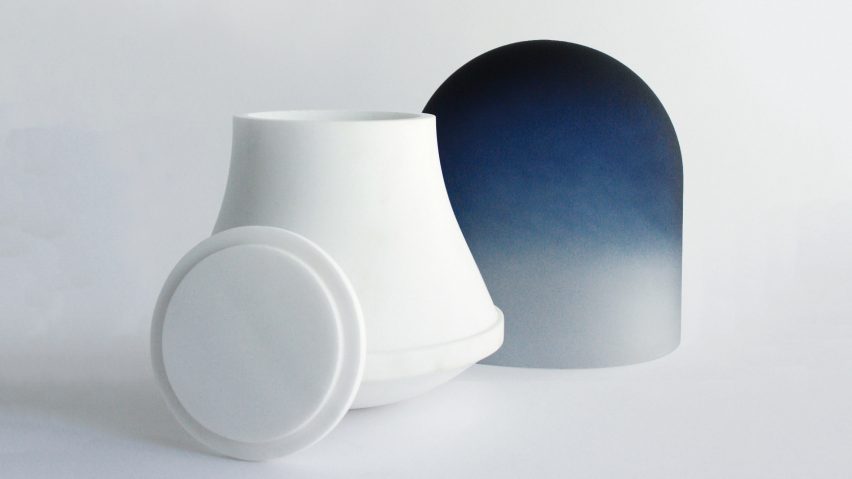
Maria Tyakina designs cremation urns to suit the contemporary home
Dutch designer Maria Tyakina has reimagined the traditional cremation urn as a futuristic domed vessel, in a bid to better suit the modern-day home.
The Dome urn is composed of three parts. The hollow inner vessel, made from white Bianco Carrara marble, is used to contain the ashes. This is covered with a flat lid, and contained within a frosted glass dome, which has been hand-painted with a deep blue ombre pattern.
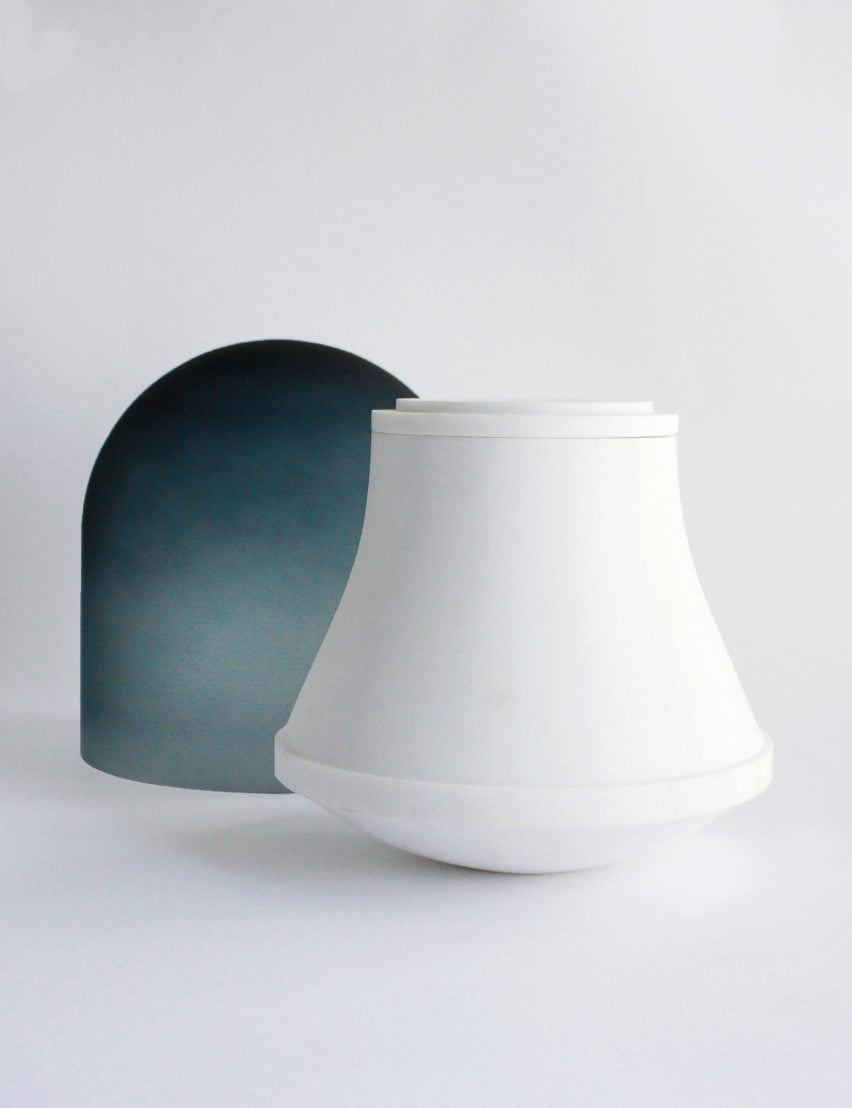
As the number of available plots for burial decreases, and the demand for cremation rises, Tyakina wanted to redesign the cremation urn to offer a modern alternative to the "uninspired and old-fashioned" urns currently on the market.
Her Dome urn aims to change the perception that cremation urns are gloomy, and only belong in mausoleums or columbaria.
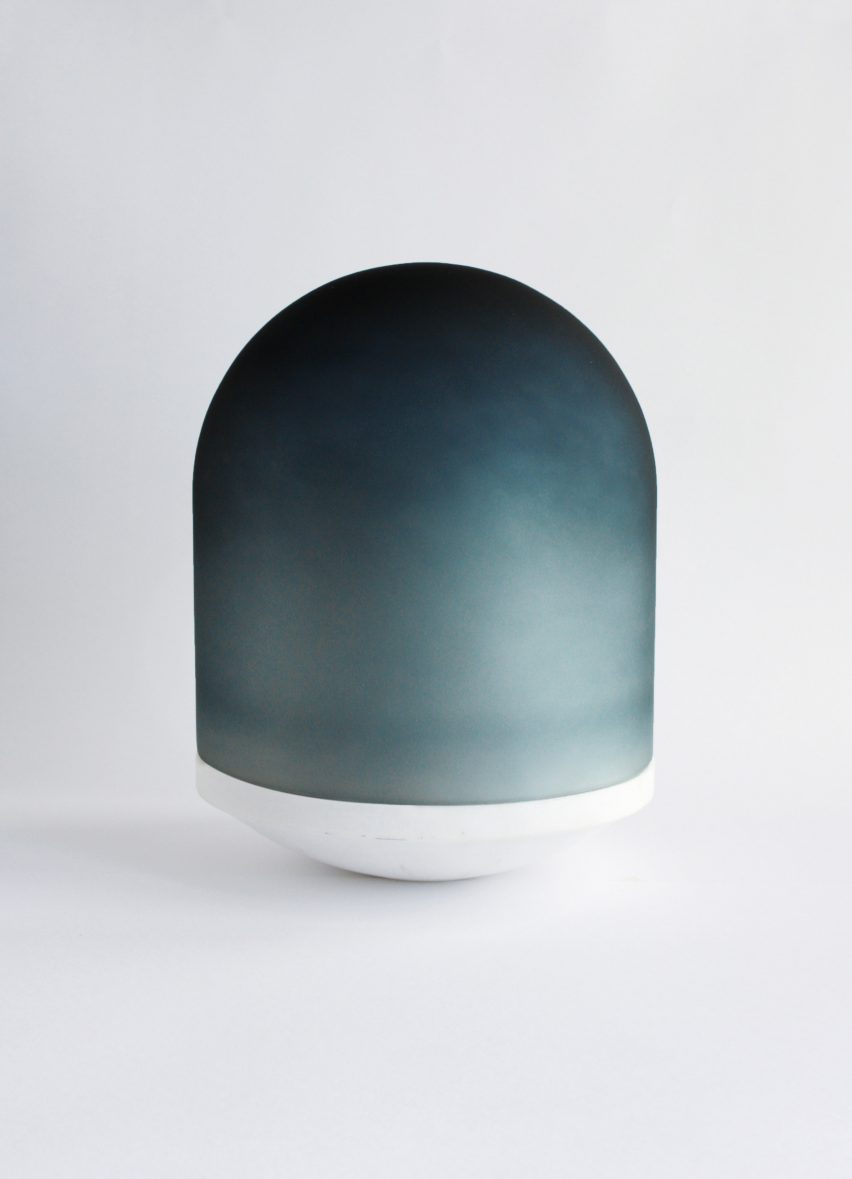
"The choice of cremation is changing our attitudes towards death. In western culture, death used to be viewed as an occurrence which bears only a negative connotation," the designer told Dezeen.
"Our contact with the remains of a passed-away person was typically guided by a technical, unemotional and hygienic approach."
"With the increasing popularity of cremation, more people are choosing to keep the remains of the deceased in their home as a memorial for their loved ones," she added.
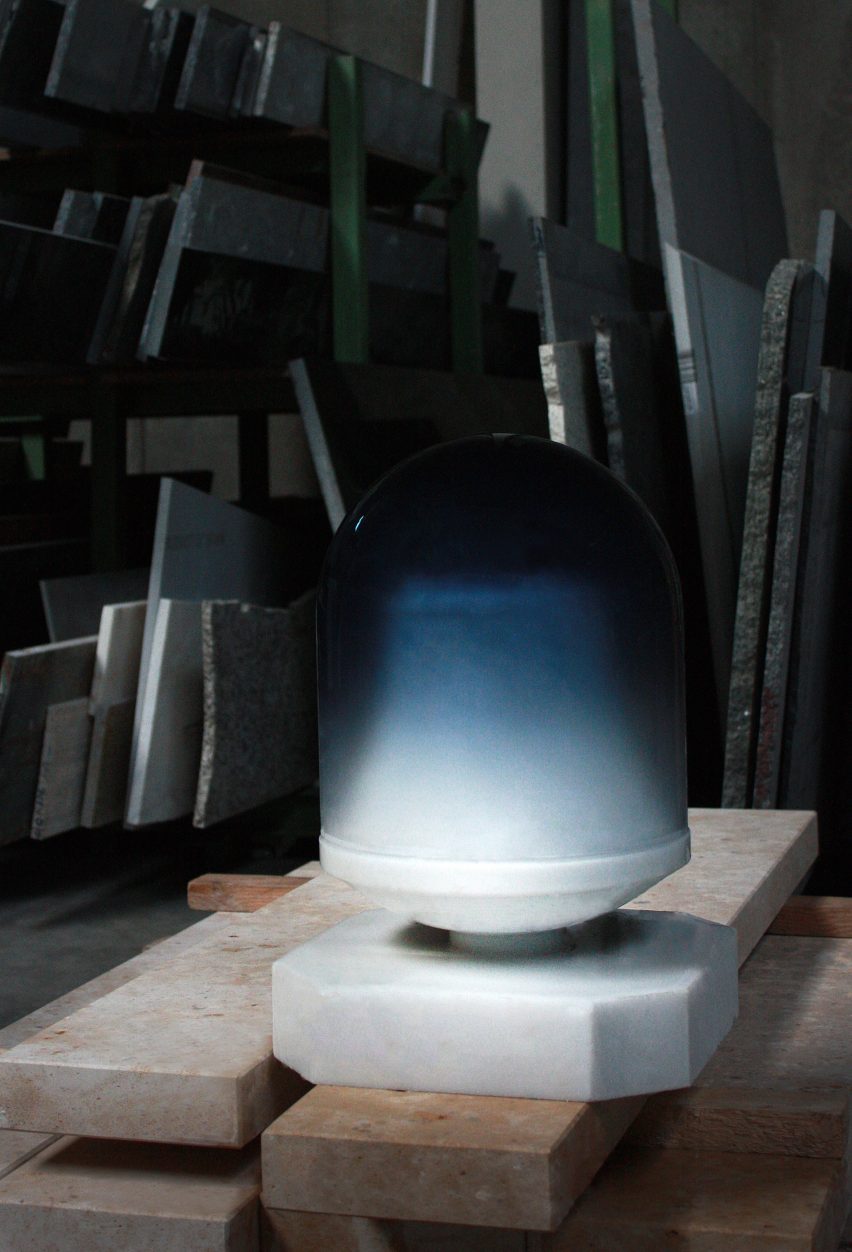
Tyakina hopes that her Dome urn will appeal to those searching for a design that can fit in with their contemporary homes.
"After many conversations with people who were looking for cremation urns and struggling to find a contemporary and non-somber design, it became very clear to me that there is a need for a different way of thinking and designing when it comes to such a special object in someone's life," she said.
"Having this in mind I wanted to make a design, which in form, colour and material can reflect the modern idea of a personal and non-depressing funeral ceremony, where the urn of ashes can be an excepted object to have in the house," she added.
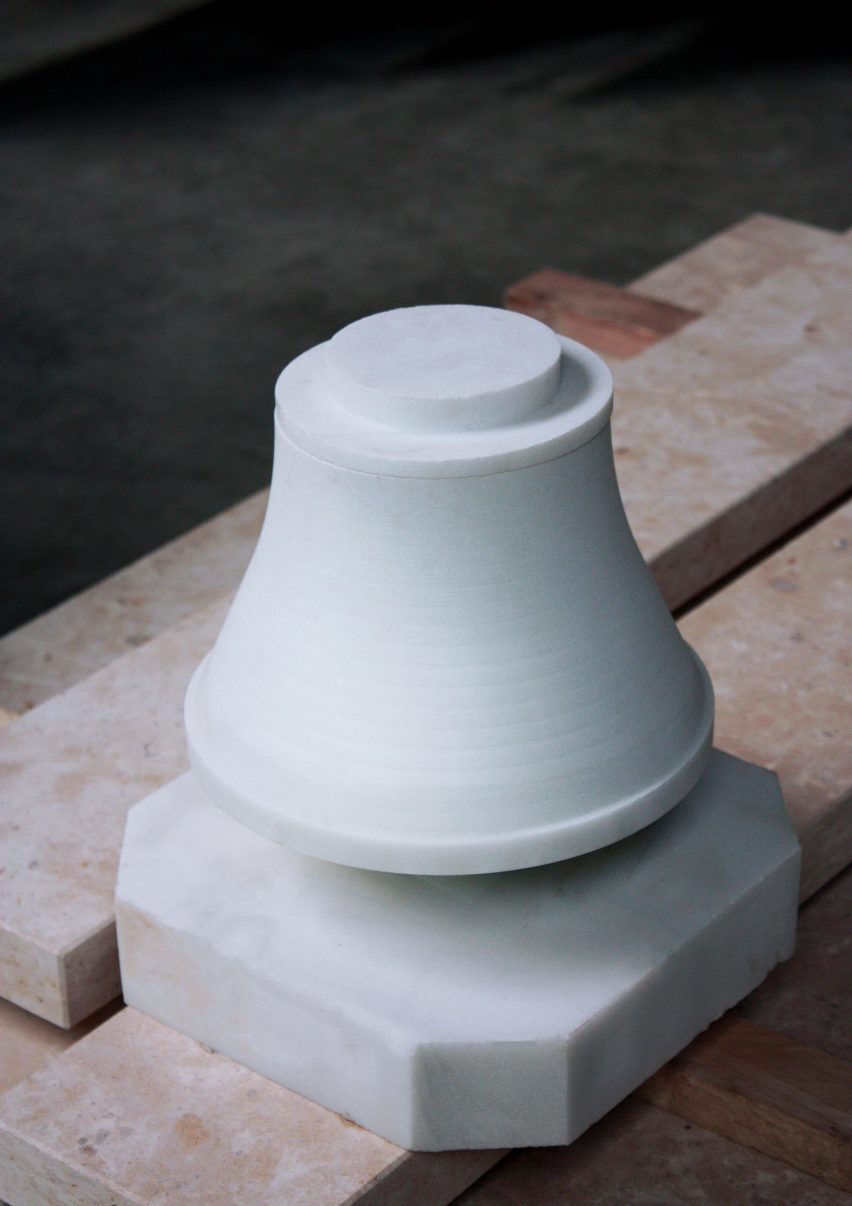
Tyakina looked to the natural world for inspiration when choosing the materials for the urn. "I was looking for a primal feeling and natural materials reflect that very well," she explained.
"The timelessness and durability provided by marble, and the fragility and extra care suggested by glass formed the ideal combination needed for the urn," she continued.
As the outer dome is made from translucent glass, the viewer is able to see the blurred outline of the vessel inside. According to the designer, seeing this silhouette creates the feeling of a "presence" inside the dome.
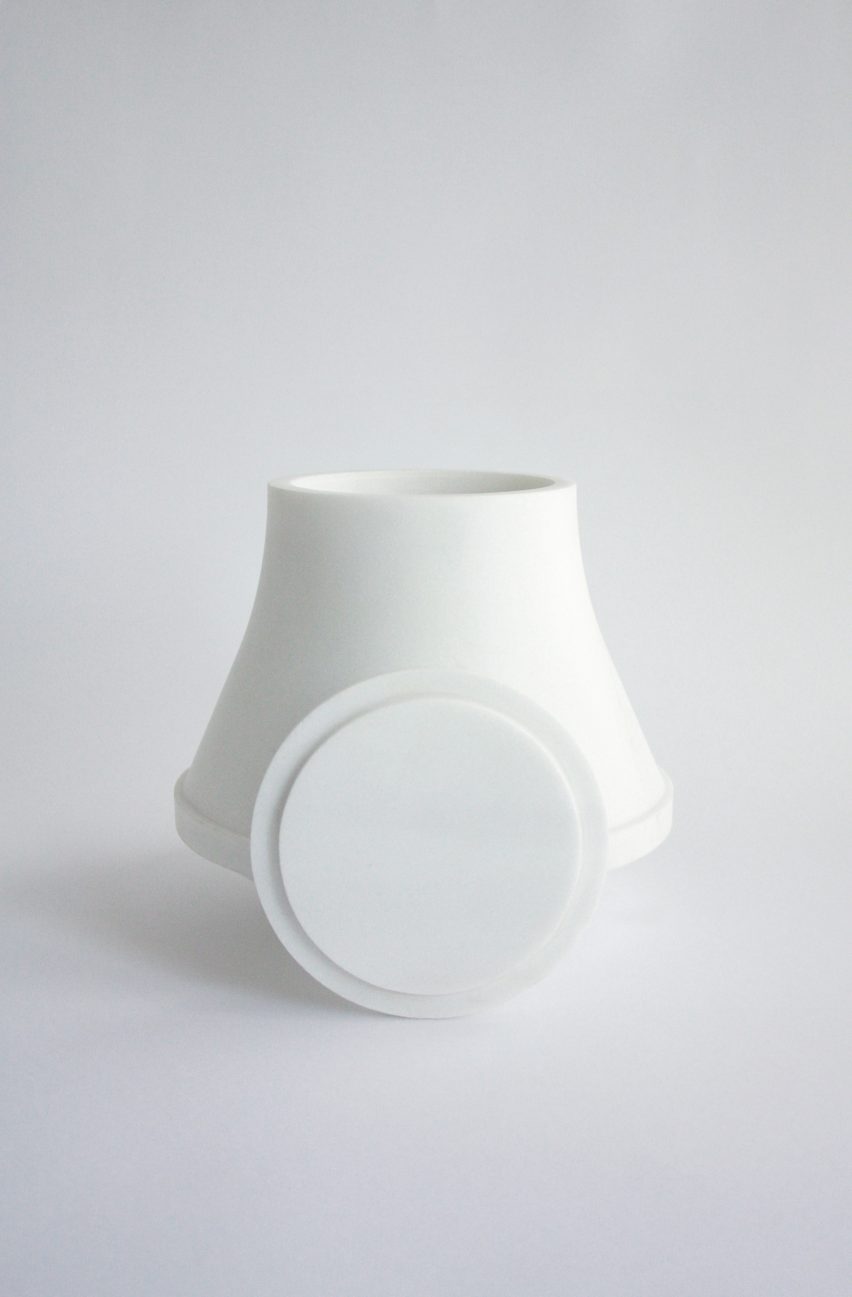
Tyakina also believes that by having two layers of durable material – the marble and the glass – covering and protecting the ashes of the deceased, the value of the contents of the vessel is emphasised.
Taking its name from the Latin word "domus" meaning "house", the Dome urn was also informed by long-standing symbolic and architectural traditions associated with dome structures.
"Found in Persian, Roman, Chinese, Western European and Islamic architecture, a mortuary tradition of domes exists across the ancient world, as well as their symbolic association with the sky," said the designer.
Dome urn will be launched as part of the Dutch Stuff presentation talking place at London's annual design festival, which will run from 20 to 23 September 2018.
Aleksander Skworz also designed an urn that would blend in with everyday life. His Urn for Living is a cremation urn that can be purchased before the user's death and used as a fruit bowl, serving as a reminder to live life to the full.